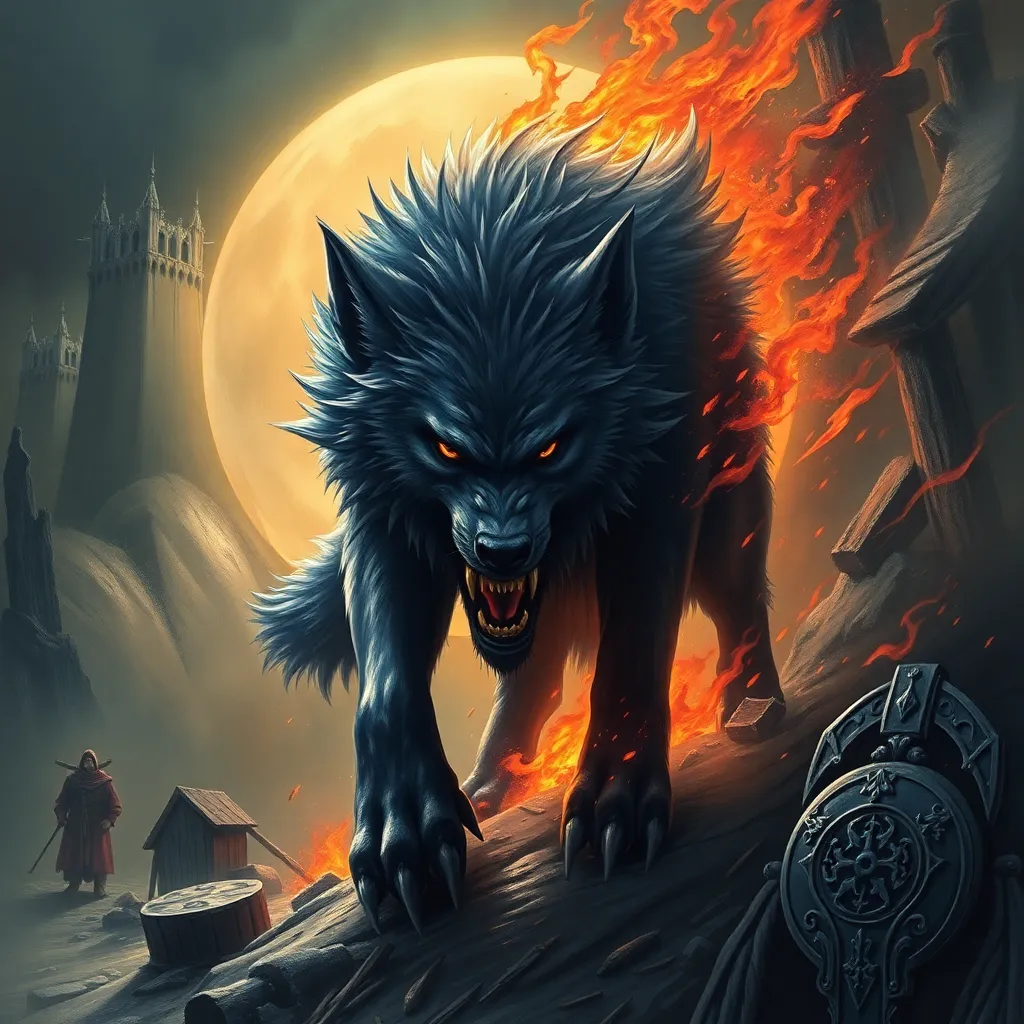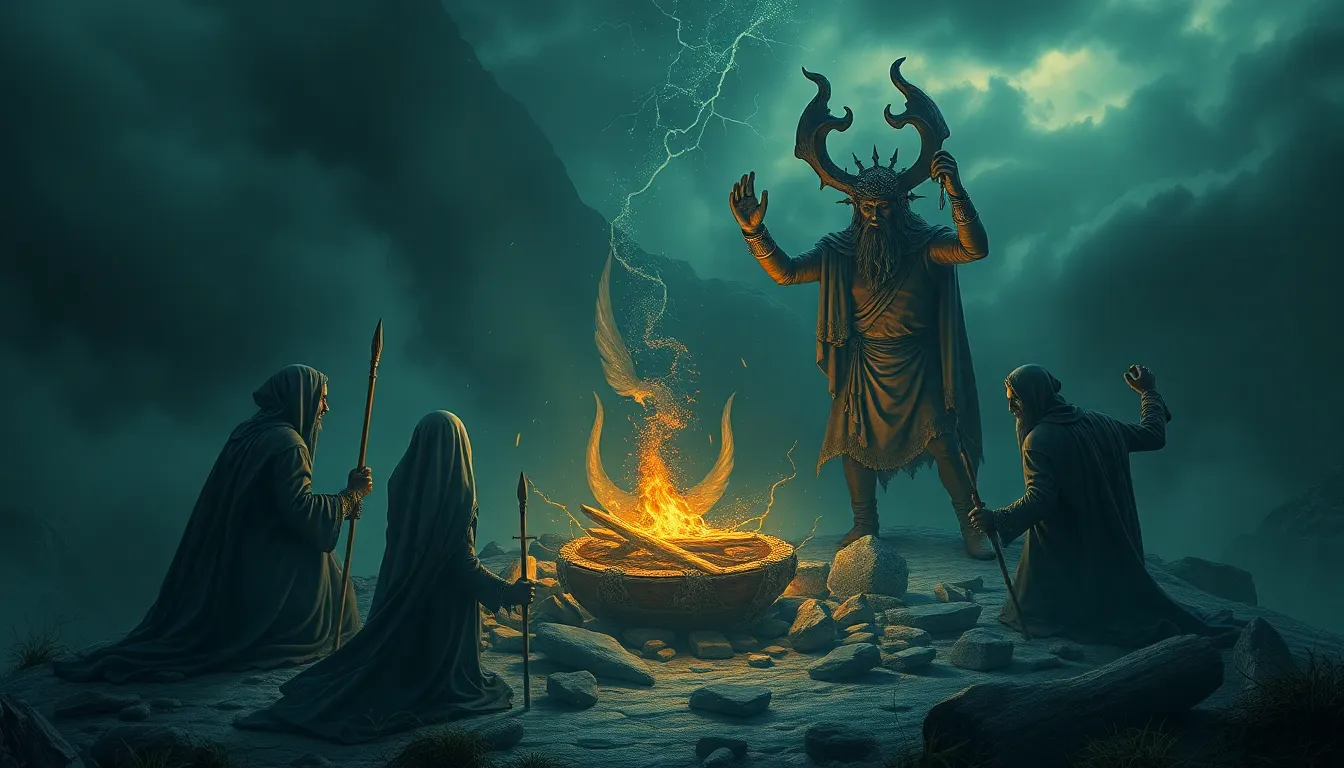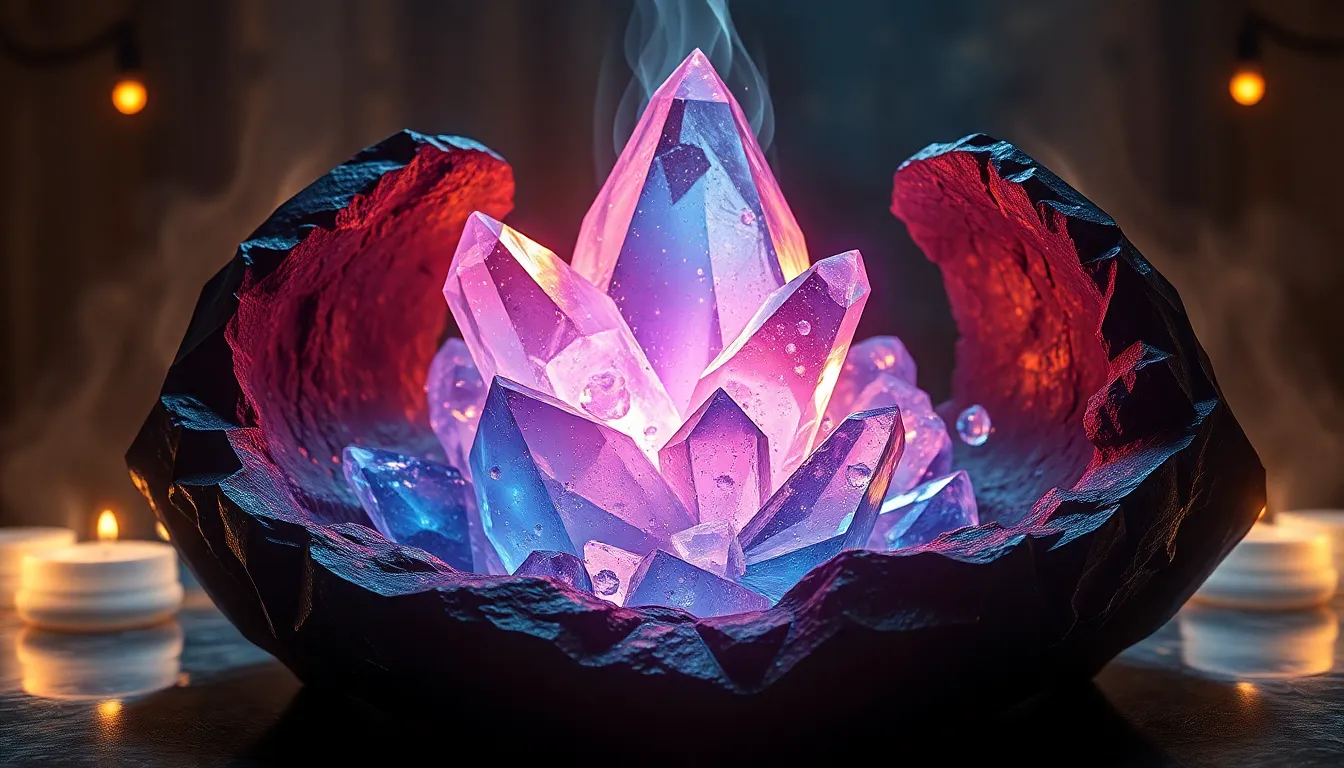The Wolf’s Hunger: Fenrir’s Appetite for Destruction in Norse Myths
I. Introduction
In the rich tapestry of Norse mythology, Fenrir stands out as a figure embodying chaos, destruction, and the primal instincts of nature. As one of the most significant creatures in the Norse pantheon, Fenrir’s narrative is intertwined with themes of fate, prophecies, and the inevitable destruction of the gods. This article delves into Fenrir’s origins, his role in mythological tales, and the broader symbolism associated with wolves in Norse culture, shedding light on the creature’s insatiable appetite for destruction.
II. The Origins of Fenrir
Fenrir, the monstrous wolf, is one of the offspring of Loki, the trickster god, and the giantess Angerboda. His lineage places him among other significant figures in Norse lore, including the serpent Jörmungandr and Hel, the ruler of the underworld. From the moment of his birth, Fenrir was marked by prophecy, foretelling that he would become a great threat to the gods.
As the gods learned of the prophecies surrounding Fenrir, they grew increasingly anxious about his potential. They feared that he would play a pivotal role in the destruction of the cosmos, leading to their attempts to control and restrain him.
III. Fenrir’s Role in Norse Mythology
Fenrir’s narrative is interwoven with key myths that illustrate his destructive nature and his relationships with other deities. Here are some notable stories:
- The Binding of Fenrir: In an effort to prevent the prophecy from coming true, the gods sought to bind Fenrir with various chains. However, he easily broke free from all but one, Gleipnir, a magical fetter crafted from impossible materials.
- The Death of Odin: During the apocalyptic events of Ragnarök, Fenrir fulfills the prophecy by killing Odin, the Allfather, as he seeks revenge for the gods’ betrayal and fear of his power.
- Fenrir and Tyr: Tyr, the god of war and justice, played a crucial role in Fenrir’s binding. He bravely placed his hand in Fenrir’s mouth as a pledge of trust, only to lose it when Fenrir was bound.
IV. Symbolism of the Wolf in Norse Culture
The wolf, particularly Fenrir, symbolizes much more than mere destruction. In Norse culture, wolves represent:
- Chaos: The wolf embodies the chaotic forces of nature that humanity strives to control.
- Fear: Fenrir reflects the fears of the gods and humans alike, representing the uncontrollable aspects of life.
- Transformation: As a creature that evolves from a mere wolf to a harbinger of doom, Fenrir symbolizes the transformative power of chaos.
In this way, Fenrir acts as a mirror reflecting humanity’s deepest fears and societal values, illustrating the balance between civilization and the wild, untamed forces of nature.
V. The Binding of Fenrir
The gods’ attempts to restrain Fenrir culminated in the creation of Gleipnir, a seemingly delicate yet unbreakable chain. This fetter was made from:
- The sound of a cat’s footfall
- The beard of a woman
- The roots of a mountain
- The breath of a fish
- The spittle of a bird
Each of these components represented elements considered impossible to bind, symbolizing the gods’ desperate measures to control fate. Fenrir agreed to be bound only if one of the gods placed a hand in his mouth as a pledge of trust. Tyr, displaying immense bravery, volunteered, resulting in the loss of his hand when Fenrir realized he had been deceived.
The implications of Fenrir’s binding extended beyond his physical restraint; it suggested a temporary victory for the gods over chaos, but ultimately, it was a futile effort, as the prophecy of Ragnarök loomed on the horizon.
VI. Fenrir and Ragnarök
Ragnarök, the end of the world in Norse mythology, is a cataclysmic event where many gods meet their doom. Fenrir plays a crucial role in this destruction:
- He breaks free from Gleipnir, representing the unleashing of chaos upon the world.
- In a fierce battle, Fenrir confronts Odin and ultimately devours him, fulfilling the prophecy of his destruction.
- His actions during Ragnarök symbolize the inevitable triumph of chaos over order, highlighting the cycle of destruction and rebirth.
Fenrir’s role in Ragnarök underscores his significance in Norse mythology as a harbinger of doom and a reminder of the uncontrollable forces that exist within the universe.
VII. Interpretations and Legacy
Fenrir’s character has transcended time, evolving within modern literature and media. He has been portrayed in various forms:
- In contemporary novels and films, Fenrir often embodies themes of rebellion against authority and the struggle against fate.
- Graphic novels and video games have also adopted Fenrir’s image, showcasing him as a powerful antagonist or a tragic figure.
- The symbolic nature of Fenrir has led to scholarly interpretations exploring the complexities of fear, chaos, and the human condition.
The legacy of Fenrir continues to resonate in modern culture, illustrating our fascination with mythological creatures that embody the darker aspects of life.
VIII. Conclusion
Fenrir, the wolf of Norse mythology, embodies an insatiable appetite for destruction that reflects the chaos inherent in nature and human existence. His story serves as a cautionary tale about the limits of control and the inevitability of fate. As we explore Fenrir’s narrative, we uncover the rich symbolism and profound lessons embedded within Norse myths, reminding us of the enduring power of storytelling and the complexities of the human experience.


